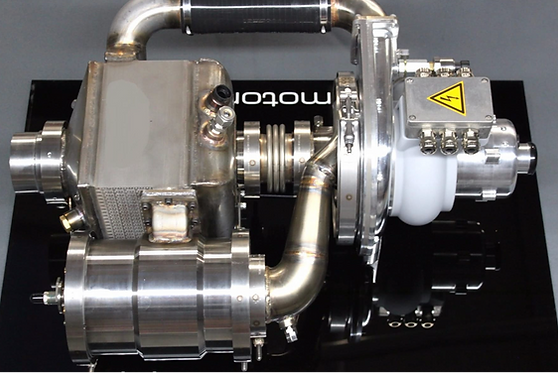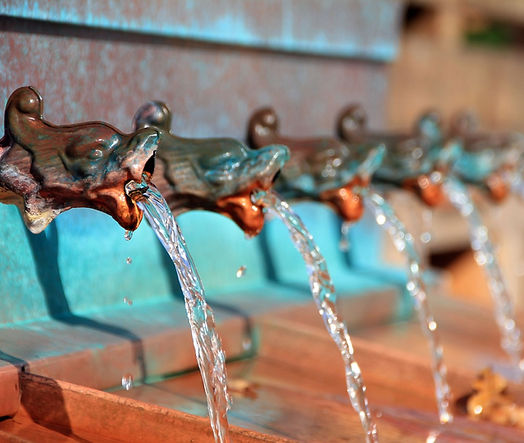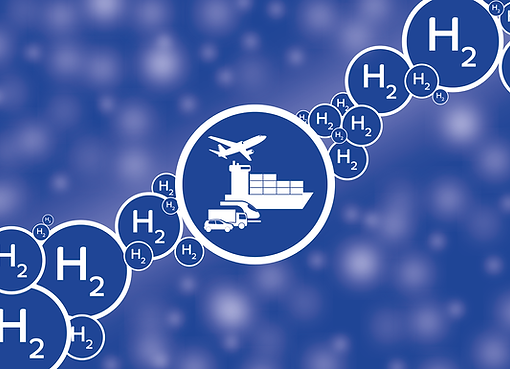top of page


Our patented breakthrough hydrogen-based fuel economy and decarbonization technology, AG-Cycle, reduces liquid and gaseous hydrocarbon fuels and carbon dioxide emissions by 60%, which the world's #1 Swiss testing company SGS corroborated.
AG-Cycle is scalable and compatible with virtually all existing industrial equipment in thermal power production and energy-intensive industries, applies to hybrid EVs and EVTOLs, and generates temperatures of up to 2,000 C°.
AG-Cycle is based on low-energy nuclear reactions (LENR), an emerging area of physics, researching phenomena with "anomalous" heat release (only recently, the USPTO allowed a distinct sub-class for LENR-related inventions: G21B3/00).
Residential, Commercial, and Industrial Heating
Utilization of AG-Cycle for heating purposes is not solely about reducing the fuel-associated costs by 60%. The New York City Climate Mobilization Act, affecting around 50,000 residential and commercial buildings, limits greenhouse gas emissions for buildings over 25,000 s.f. by 2030 and 2050 to 60% and 20% of the 2005 level. Complying with the Act is expected to cost the building owners a fortune. Hefty fines will be imposed on the owners when emissions exceed the limits. In most cases, utilizing AG-Burner makes a building compliant with the

Highway Transportation
The integration of AG-Cycle into existing series hybrids is the best of both worlds solution (ICs and EVs) due to the impressive fuel economy of 120 – 150 MPG and obviation of range anxiety, even though they will still be running on liquid fossil fuels. Problems of creating the charging infrastructure and boosting power distribution needed to proliferate classical EVs infrastructure will go extinct. The fleet of such vehicles will make up a global network of distributed power and increase the resilience of existing power infrastructure. The AG-Cycle integration into existing series hybrids will be retrofitting a compact externally-fired gas turbine generator.

Thermal Power Production
In thermal (Rankine cycle) residual fuel oil and natural gas power plants, implementing AG-Cycle comes down to substituting conventional burners with AG-Burnes. For coal power plants scheduled for decommissioning, re-firing to natural gas and retrofitting AG-Burners is the best option financially and environmentally. Utilities in EU countries will benefit the most due to the established carbon credits trading system there. It is possible to develop AG-Burners running on coal-water slurry for use in existing thermal coal power plants by equipping the burner with a slag-removing system.

Oil Refining
Oil refineries spend energy equivalent to at least 6% of the crude oil they process for technological purposes. Energy costs at some refineries account for up to 50% of total OPEX, and steam and power production account for most of this thermal energy. Not only can AG-Cycle reduce oil refining fuel-associated costs by 60%, but it can also deliver additional savings due to the possibility of using low-grade fuels with a moisture content of up to 70%.

Cement
Installing an AG-Burner in place of a conventional burner for clinker firing not only reduces specific fuel consumption and cuts CO2 emissions but also allows for producing higher grade cement, presumably due to a much higher temperature and the strong presence of reducing agents in flame (H2, CO). The economic benefits of the higher price of such higher-grade cement will likely exceed the benefits of reduced fuel-associated costs. Additionally, high sintering temperature reduces the sintering time from half an hour to several minutes, thereby significantly increasing the rotary kiln’s performance.

Direct Reduction of Iron
AG-Cycle may expedite the transition to direct reduction of iron (DRI) in the industry. DRI is the removal of oxygen from iron ore in the solid state, i.e., without melting, as in the blast furnace, by using reducing agents, hydrogen, and carbon monoxide coming from reformed natural gas, syngas, coal, or green hydrogen. Since AG-Burners may be tuned to generate more reducing agents and less thermal energy, they are far superior to conventional steam methane reforming equipment for DRI due to several times lower specific CAPEX, the absence of costly expandable catalysts, and higher fuel efficiency.

Thermal Water Desalination
In two predominant thermal water desalination methods, multi-stage flash distillation (MSF) and multi-effect distillation (MED), which take up around 30% of the market, the cost of thermal energy accounts for 30 – 40% of the costs. AG-Burners can reduce desalinated water costs by 18% - 24% in directly-fired (non-integrated) systems. Today, in the largest markets, most desalinated water is produced by integrated systems, where the desalination unit runs on the waste heat from a gas turbine or thermal power plant. The problem is that on many markets, the demand for desalinated water grows faster than for electricity, i.e., paring a gas turbine power plant or thermal power plant and a thermal desalination unit is no longer sustainable. AG-Cycle is a solid solution to the problem.

Hydrogen
Most industrial hydrogen is produced by steam methane reforming (SMR). In SMR, natural gas is a feedstock (raw material) and a thermal energy source. AG-Cycle cannot reduce the consumption of a feedstock portion of natural gas. Still, it can reduce the expenditure of natural gas burned to produce thermal energy for this exothermic reaction. SMR equipment varies in efficiency; the estimates indicate that implementing AG-Cycle may reduce overall natural gas consumption by 15% - 20% (the lower the equipment's SMR efficiency, the greater the reduction of natural gas consumption.)

Mineral Wool and Basalt Fiber
Coke (coal with very high carbon content) is a primary thermal energy source in mineral wool and basalt fiber manufacturing. The alternative is oxy-combustion of natural gas (the oxygen-enriched environment is needed to produce a high enough temperature to melt basalt.) AG-Cycle may reduce natural gas consumption and do away with oxygen generators because it can generate high enough temperature without additional oxygen. Also, AG-Cycle allows for switching from costly coke to natural gas, dramatically decreasing fuel-associated costs.

Phosphogypsum Recycling
About one bn ton of phosphogypsum (substantially calcium sulfate dihydrate, CaSO4*2H2O) is deposited in 24 stacks in Florida alone. When CaSO4*2H2O is fired, it turns into anhydrite (CaSO4), the popular construction material and the primary feedstock in anhydrite cement manufacturing. Phosphorus pentoxide, P2O5, is present in phosphogypsum and is known for impairing anhydrite quality; its removal by conventional methods is costly. Due to high temperature, AG-Cycle reduces fuel consumption in producing anhydrite from phosphogypsum and neutralizes P2O5, presumably due to very high temperatures and reducing agents in the flame.

bottom of page